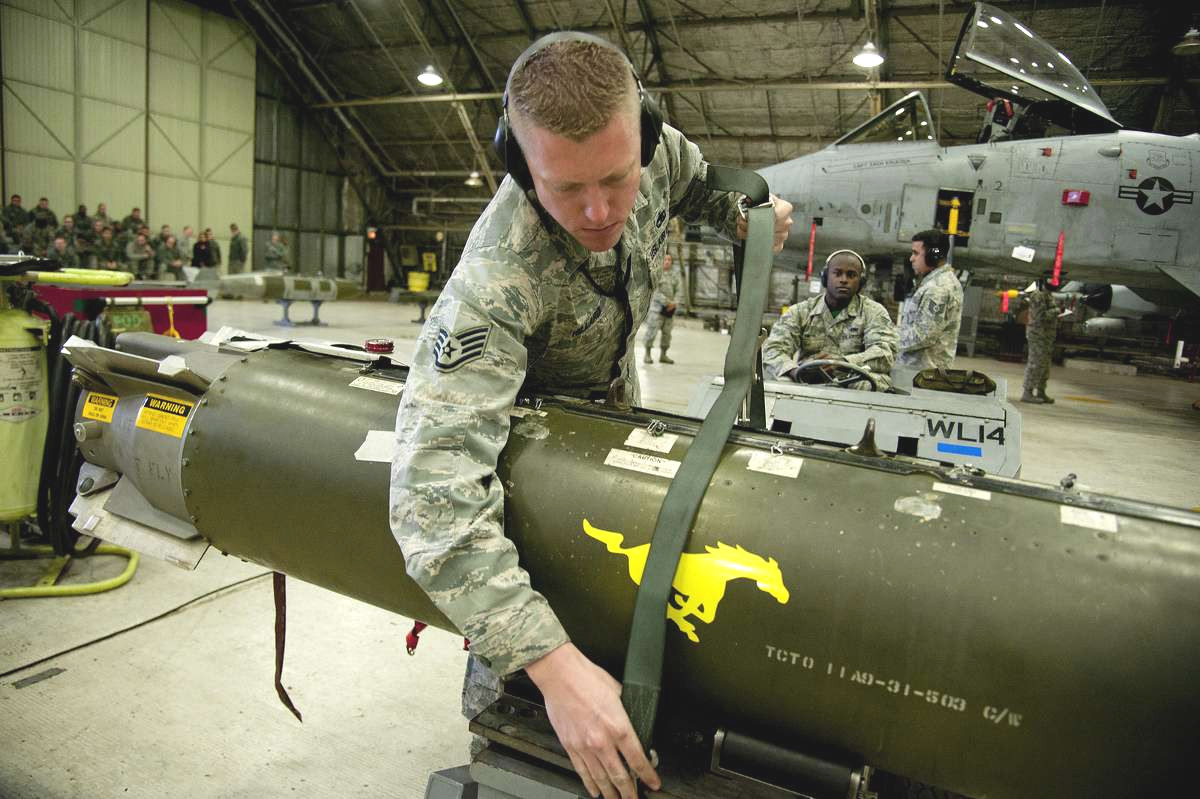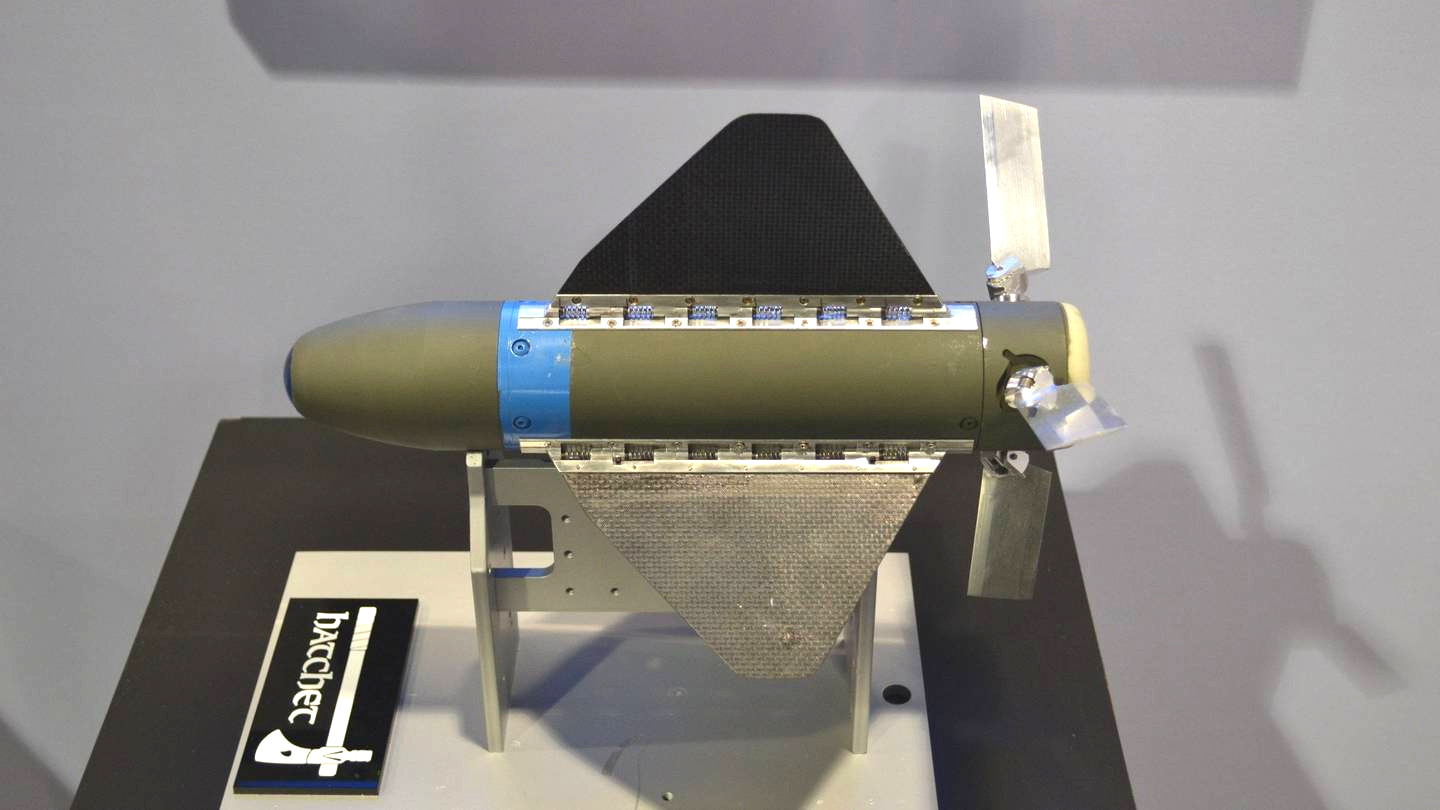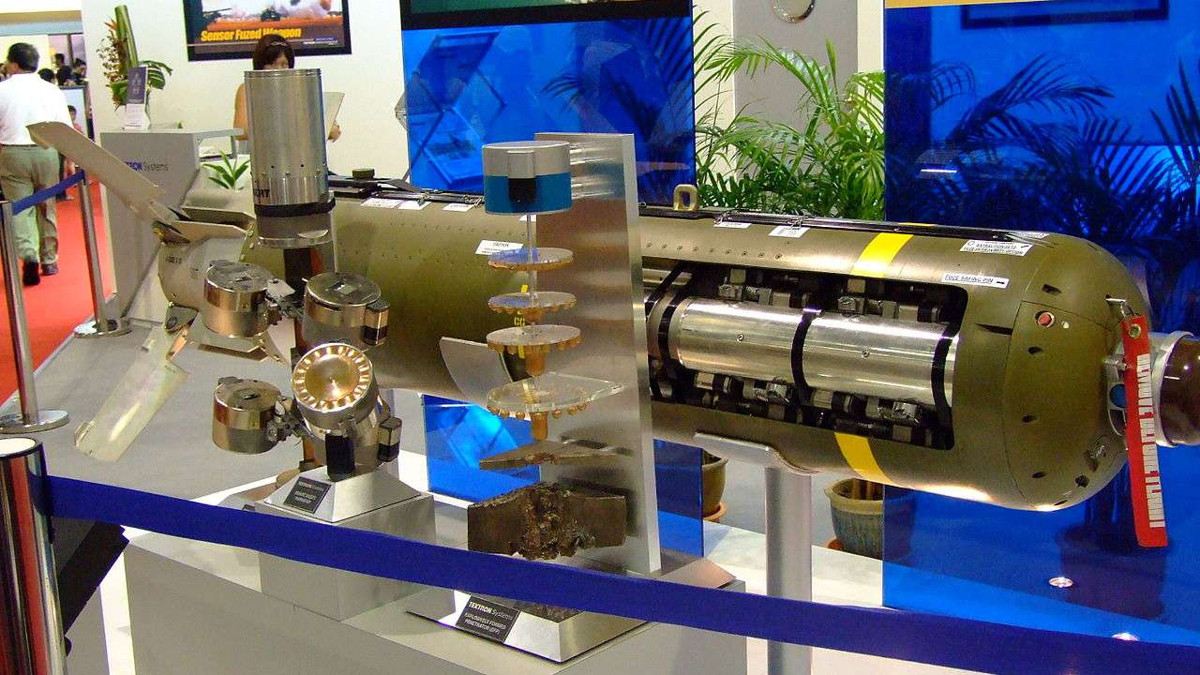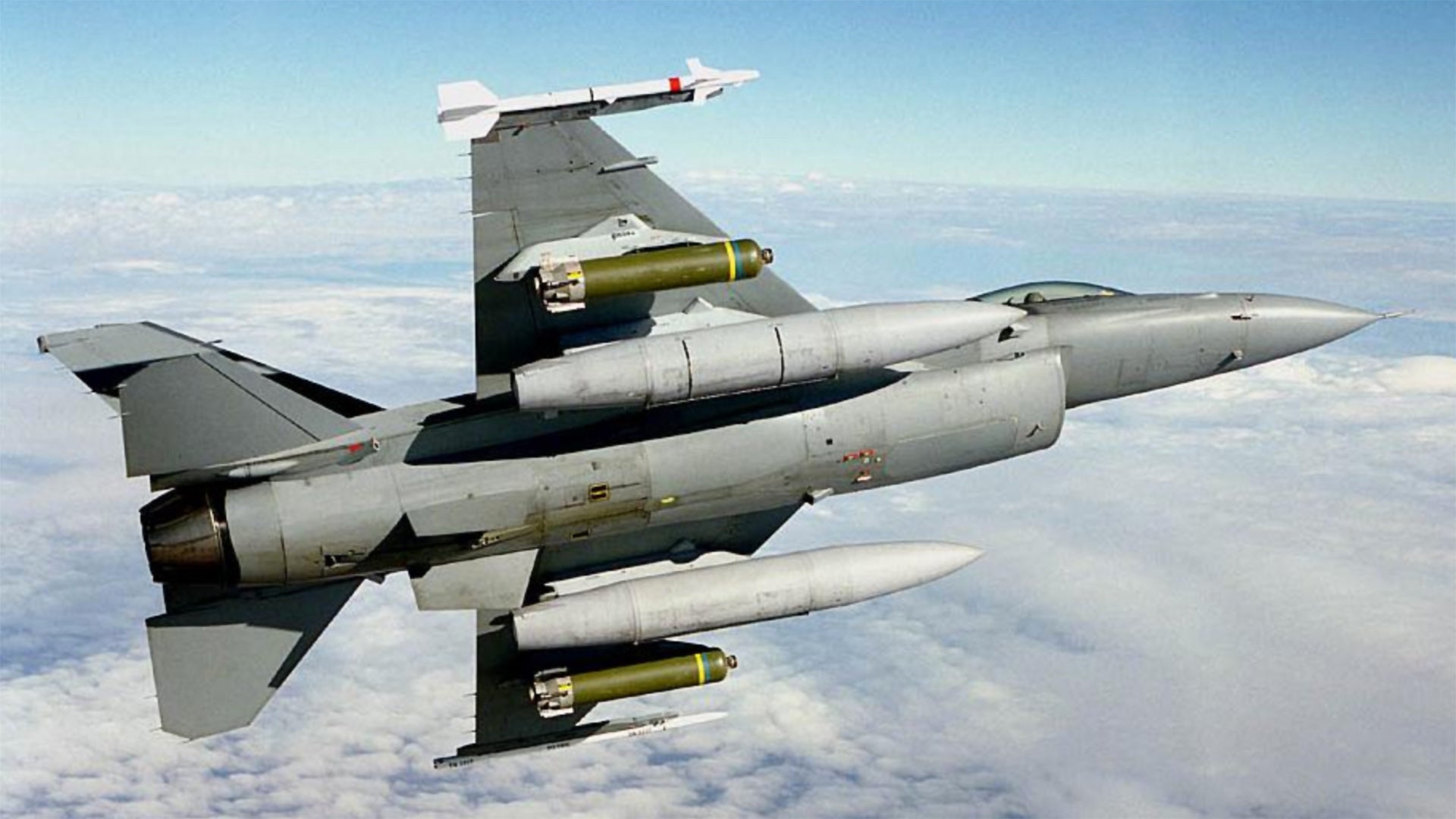The Pentagon says it is indefinitely delaying plans to stop using certain cluster munitions because it needs more time to develop adequate alternative weapons. The policy change exposes the difficulty the U.S. military has had in finding replacement bombs, rockets, and artillery shells that both meet its legitimate operational needs and take humanitarian concerns in account.
On Nov. 30, 2017, Reuters was the first to obtain and report on a copy of the new memorandum. The new policy rescinds the previous requirement for all branches of the U.S. military to dispose of any cluster weapons in which the individual bomblets or grenades inside fail to function properly more than one percent of the time by Jan. 1, 2019. It also says that weapons that do not meet this one percent threshold, but have a system to disarm or self-destruct within 15 minutes, will now be acceptable, as well. Then Secretary of Defense Robert Gates first formalized the earlier plan under President George W. Bush in June 2008.
Why cluster munitions?
Cluster munitions are “legitimate weapons with clear military utility,” Deputy Defense Secretary Patrick Shanahan wrote in the memo, according to Reuters. “Although the Department seeks to field a new generation of more highly reliable munitions, we cannot risk mission failure or accept the potential of increased military and civilian casualties by forfeiting the best available capabilities.”
Under the most basic definition, cluster munitions are bombs, rockets, artillery shells, and other projectiles that, when fired, subsequently release a number of smaller weapons. These submunitions are most commonly high explosive charges or land mines, which are types covered by various international treaties including the Convention on Cluster Munitions, which we will return to in detail later on.
In addition, there are numerous examples of special purpose clusters can consist of smoke generating chemicals to mark targets or hide friendly forces, bundles of metal filament or similar materials to confuse radars or knock out power transformers, flares, or even propaganda leaflets. In the past, the U.S. Army has even experimented with artillery rounds full of foul-smelling bomblets as a non-lethal weapon.

These weapons are inherently best suited to attacking large, concentrated, and mobile enemy formations, especially if they appear suddenly and threaten to overwhelm smaller friendly positions. It’s also a more practical option for engaging hostile forces when they are on the move and their exact position
Not surprisingly, the bulk of the U.S. military’s approximately 1.5 million forward deployed cluster munitions are in and around South Korea, according to The New York Times. There, an American force and its South Korean allies face the ever present prospect of hundreds of thousands of North Korean troops, backed by largely dated, but still threatening tanks and artillery, launching a sudden attack across the demilitarized zone.
Those concerns have undoubtedly only become more pronounced in 2017 in light of North Korea’s dramatic ballistic missile and nuclear weapon developments, which it has coupled with a steady flow of bellicose rhetoric. The situation in Europe, where a revanchist Russia has been increasingly flexing its own military muscle, is also increasingly worrisome.
It is unclear whether there have been any significant changes to the rest of the prescriptions Gates’ outlined in his 2008 memorandum. The previous policy required the top officers running the U.S. military’s five regional warfighting commands to sign off on requests to employ cluster munitions with a failure rate of more than one percent in any areas under their respective purview. If this remains the case, the head of U.S. Pacific Command would still need to authorize U.S. troops on Korean Peninsula to use many of the weapons during a crisis.

Cluster munitions are hardly perfect
But despite their military utility, cluster munitions have always been far from perfect. Just due to their size, submunitions rely on small and often complex mechanical or electrical systems to function properly, components that also have to survive the shock of flying out of an artillery piece or falling from a fast-moving aircraft. The bomblets and grenades routinely fail.
One U.S. Army study in 2000 found that Dual Purpose Improved Conventional Munitions, or DPICM – submunitions inside artillery shells and rockets that both had shaped charges to break through armor and a fragmentation liner to kill troops in the open – wouldn’t work up to 14 percent of the time. These duds, still full of explosives and with fuzes that might still go off, become a threat to both friendly troops and innocent civilians, even years after a conflict ends.
“This was a hard choice, not one the department made lightly,” Tom Crosson, a Pentagon spokesperson, told CNN on Nov. 30, 2017. “The new policy remains committed to the same end-state of the 2008 policy: acquiring safer and more reliable weapons that ensure both effectiveness on the battlefield and minimal risk of noncombatant and friendly casualties.”
This has, so far, proven to be an elusive combination, which appears to be the key factor in the Pentagon’s decision to delay its plans to scrap many of its existing, potentially unreliable weapons. The U.S. Air Force, U.S. Army, and U.S. Navy have all been scrambling, amid budget cuts and caps, to find alternative options that either meet the new standards or attack the problem for an entirely different direction.

Technical challenges
The simplest and perhaps most obvious of these projects have focused on developing a single “unitary” warhead that creates the same effects across a wide area as a cluster munition. The Army has already begun purchasing 227mm artillery rockets with these so-called “alternative warheads,” that create an especially deadly cloud of shrapnel when they go off.
The difficulty with these weapons has been producing a sufficiently multi-purpose and wide-area effect. The Army’s alternative warheads are also fine when attacking troops in the open or even behind cover, as well as unarmored trucks, but are of limited use against tanks and other armored vehicles. The GPS-guided rockets also focus their fire on a much tighter area than older cluster munitions, meaning artillery units would have to spend more time and fire more rounds in total to neutralize the same target sets.

The Air Force has considered a similar solution for air-dropped weapons, known as the Cast Iron Ductile Bomb. In 2015, then writing for Foxtrot Alpha, The War Zone’s Tyler Rogoway explained in detail how precision guidance and improvements in the transfer of information between a releasing aircraft, its sensors, and the weapon itself might help mitigate the loss of immediate, wide area effects.
“If the Cast Ductile Iron Bomb replacement for a traditional cluster bomb ends up having a smaller effective blast area then its counterparts, and if larger areas are needed to be attacked – say a spread-out formation of infantry moving across the battlefield – more weapons can be used to offset this handicap. With more accurate guidance then its WCMD counterpart and with proper integration into an aircraft’s targeting and mission computers, a pilot or weapon system officer could select an area they would like to “cover” and then assign proper coordinates and fusing information to multiple guided Cast Ductile Iron Bombs. Thus achieving a similar affect as a traditional cluster bomb, which is really just a dispenser for bomblets, without the cluster bomb’s political or moral baggage.
“The basic Cast Ductile Iron Bomb would most likely be akin to a general purpose bomb body made out of iron and possibly scored for an evenly dispersed fragmentation upon detonation. There are multiple requests for this type of weapon being tendered by the DoD today, and there is even one for the Small Diameter Bomb which could give any combat aircraft a standoff area affects weapon. In the future, more elaborate designs could be put into service, including ones with a complex array of pre-separated individual projectiles and advanced fusing options.”
Of course, none of this would change the fact that a single cluster bomb could cover more area at once and that cluster munitions would give the pilot the potential to attack more targets during a single sortie. Miniaturized, precision guided munitions could similarly alleviate some of these issues, allowing aircraft in particular to carry more of them at at time, but the smaller they get, the more they would invariably start looking like traditional submunitions.

“Smart” cluster munitions
Many of the same issues apply to advanced, “smart” cluster munitions loaded with submuntions that use infrared sensors, radars, or other means to detect and home in on particular targets. The Swedish-designed Bonus and German-made SMArt155, both 155mm artillery projectiles, each have just two sensor-fuzed bomblets.
As part of a larger program, called the Cannon-Delivered Area Effects Munition (C-DAEM), the Army is investigating, called Praxis, contains four similar payloads. A typical 155mm DPICM artillery shell has nearly 90 individual grenades.

The same goes for air-launched weapons. The Air Force’s CBU-105/B and CBU-115/B Sensor Fuzed Weapons, 1,000-pound class air-dropped cluster bombs, both have 10 individual BLU-108/B submunitions with infrared sensors, while older cluster bombs have hundreds of bomblets. You can read all about this particular weapon here.
There’s also a cost factor with many of these “smart” air-dropped and artillery-fired cluster munitions. Multi-mode submunitions may be more reliable, but they’re also significantly more expensive.

So, at the same time, there have been efforts to build more reliable versions of the existing submunitions or add in new capabilities to ensure the grenades or bomblets self-destruct if they fail to hit a target. The Navy is working on a High Reliability DPICM in which a single electrical current runs through all the grenades in an artillery shell, arming them all simultaneously and making the whole system more reliable, at least in theory.
The Army has its own artillery shell effort, called DPICM-XL, which is seeking to craft an updated, self-contained system with multiple fuzing options and self-destruct timer. A GPS guidance kit would help keep the munitions limited to the intended target area. Both remain in the research and development phase.

Humanitarian concerns
Still, it’s hard to deny that there is a growing international push against cluster munitions in general. In addition to the dangers of unexploded ordnance, critics contend that the weapons are inherently indiscriminate and therefore illegal under international law for countries to use in many cases, as a military force would be unable to properly take steps to limit collateral damage and civilian casualties.
In February 2008, dozens of countries agreed in principle to eliminate these weapons from their arsenals and by the end of the year, the Convention on Cluster Munitions (CCM) was ready signatures. At present, there are more than 100 signatories to the CCM, which prohibits parties from using, producing, or selling cluster munitions as the treaty defines them, or otherwise supporting those activities anywhere else.
The Pentagon “[is] perpetuating use of an indiscriminate weapon that has been shown to have high failure rates,” Patrick Leahy, a Democrat from Vermont who has long championed arms control and human rights issues, told Reuters after learning of the 2017 policy change. Senator Dianne Feinstein, a California Democrat who had joined Leahy in proposing a ban on funding for cluster munitions that did not meet the one percent requirement in April 2017, called the decision “unbelievable.”

Secretary of Defense Gates’ 2008 policy memo was a clear attempt to find some sort of middle ground, though, for a country that has not signed or ratified the CCM. The result has, in many ways, been an oddly confused jumble of policies and political considerations.
For one, it’s important to note that the CCM has substantial loopholes in its definitions of what is and isn’t a cluster munition. Systems that do not dispense high explosive submunitions or land mines aren’t subject to its provisions. Any projectile with less than 10 grenades or bomblets, each with a sensor to attack a particular target, a self-destruct feature, and weighing more than nine pounds, simply doesn’t count.
This is why Germany and Sweden, who are both treaty members, are still building the SMArt155 and Bonus shells. There is no stipulation in the CCM about how reliable exempted submunitions have to be whatsoever. Its worth noting, again, that these would not necessarily meet the U.S. military’s requirements for a weapon to quickly and effectively engage large formations of enemy troops.

Hard choices
Rather than seek workarounds within those guidelines, the United States voluntarily offered up the extremely difficult proposition of meeting a one percent reliability goal. This has put the U.S. government in the uncomfortable and somewhat embarrassing position of having to walk back its own, self-imposed plan.
In addition, under the 2008 policy, the U.S. military had only been able to transfer cluster weapons that did not meet the one percent threshold to foreign countries on the condition that they would not use them after Dec. 31, 2018. We don’t know if that policy has changed now, either.
The United States had faced significant international criticism for sales of these munitions, especially with regards to Saudi Arabia, which has subsequently employed them over the course of their controversial intervention in Yemen. Observers on the ground used evidence from that conflict to challenge the U.S. military’s specific assertion that the Sensor Fuzed Munition in particular met the one percent goal, as well.

Responding to broad international pressure, President Barack Obama halted the sale of any additional cluster bombs to the Saudis temporarily in May 2016. The House of Representatives voted against a more formal legal restriction on those transfers in June 2017.
And that political debate has been seeping into the industrial base, as well. In August 2016, Textron said it would halt production of the Sensor Fuzed Weapon entirely, citing reduced U.S. military demand and increasing difficulties in obtaining approval to export the bombs overseas. In its new 2017 cluster munitions policy, the Pentagon says that there are presently no weapons in production at present in the United States that meet the one percent reliability requirement.

Alternative weapons could still be years away from being viable, but at the same time defense contractors are facing increasing pressure to refocus their efforts. Immediate purchases of domestically or foreign designed “smart” cluster munitions that are actually CCM compliant might still not meet the one percent reliability requirement, calling that entire end goal into question.
Without these types of weapons, its equally hard to imagine the U.S. military not being at a disadvantage in any future, large scale conflict, including against near peer adversaries, such as Russia or China. The United States relies heavily on the firepower that cluster munitions offer to offset the significant manpower advantages that many potential opponents, including North Korea, could commit to a fight – though cliche, it is still true that sometimes quantity can have a quality all its own.
How the United States chooses to proceed from here could easily prove both technically and politically complicated. At the same time, American commanders will continue to have a legitimate requirement for the kinds of effects that these weapons create.
Contact the author: joe@thedrive.com
